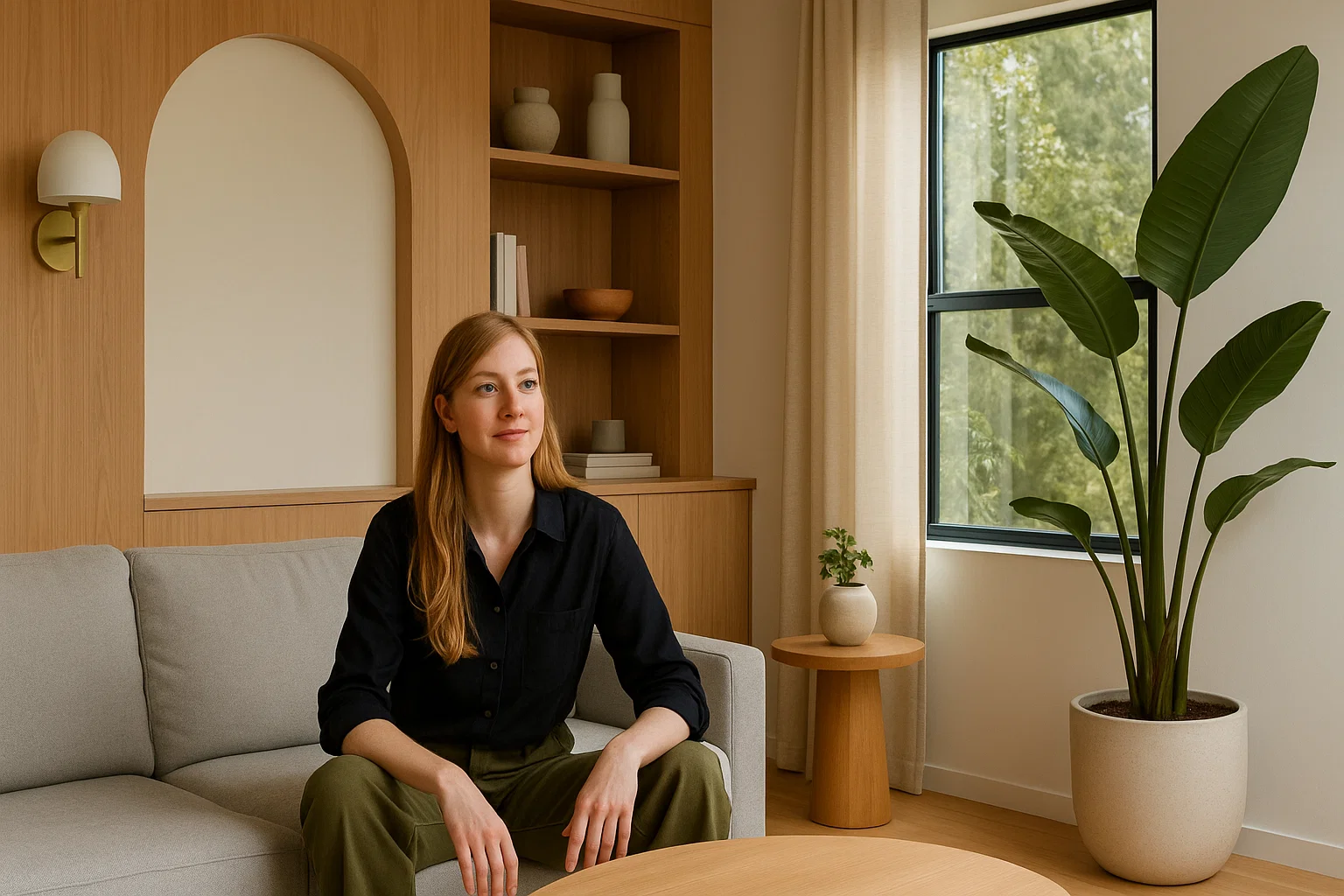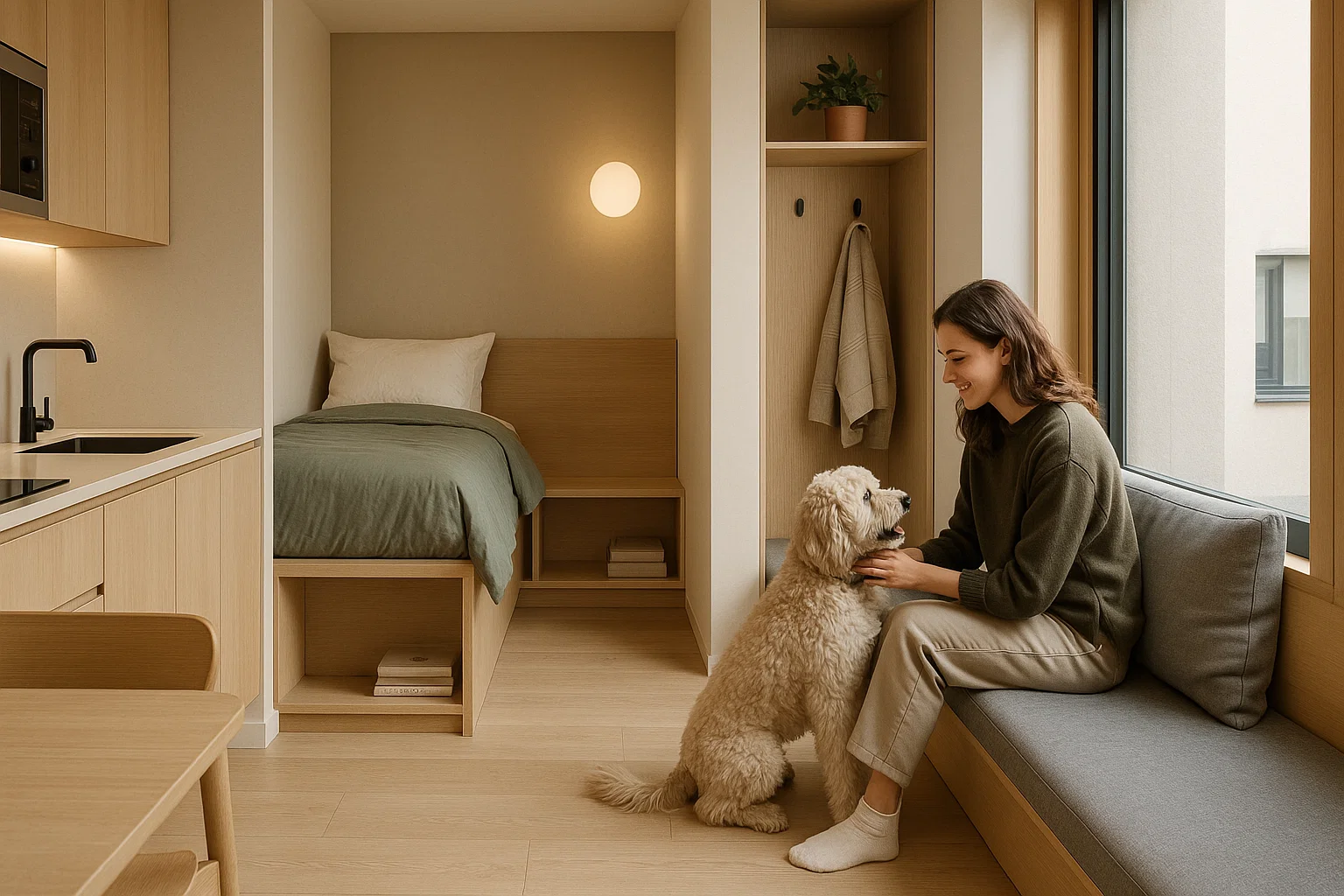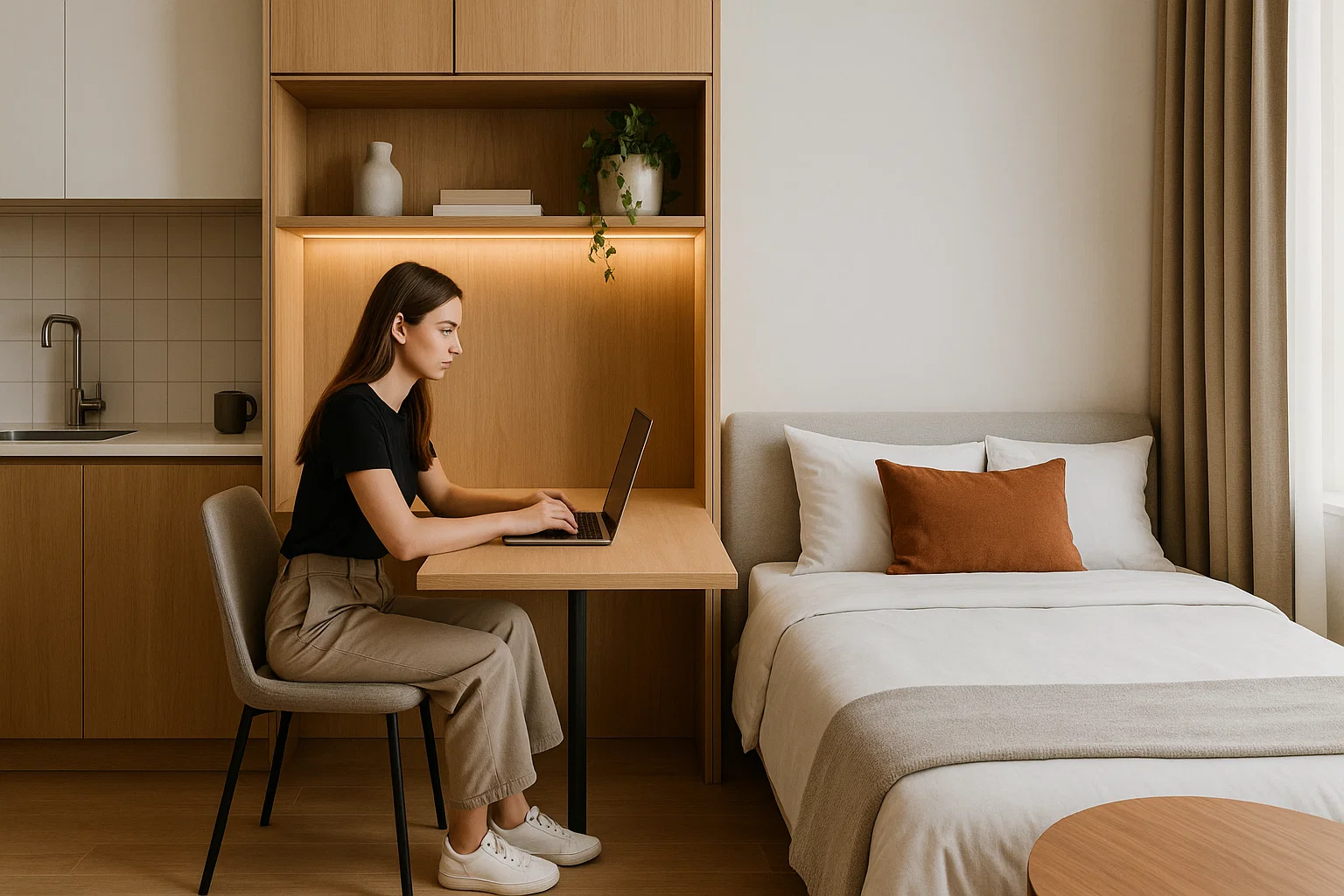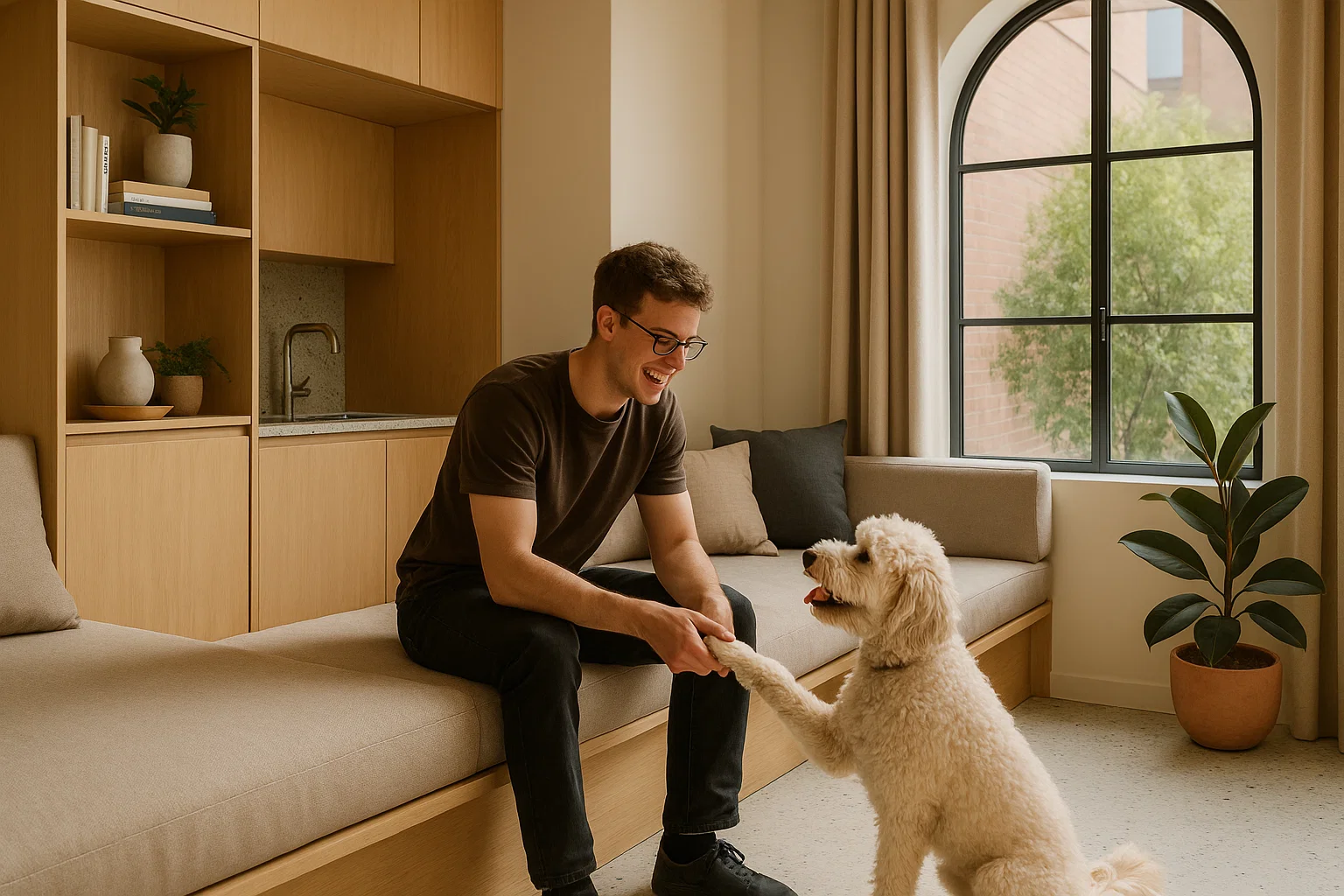
This Inventor’s LA Home Is a 630 Sq. Ft. Masterclass in Clever Design
Meet Simone Giertz. If you know her, it’s likely from her early days building “shitty robots”. But today, this inventor and product designer is tackling a different kind of challenge: her own 630-square-foot (58 sqm) Los Angeles home. What she’s created isn’t just a place to live; it’s a living laboratory, a meticulously crafted machine where every inch serves a purpose, proving that limitations often breed the most brilliant solutions.
For Giertz, home is a sanctuary, a “house that spoons me,” a cozy retreat where she can recover from a work life that often involves significant adventure. This isn’t her first rodeo with unconventional spaces; at 20, she bought, renovated, and lived on an old tugboat in Stockholm, Sweden. She views small living not as a restriction, but as a “design challenge” that provides “very clear parameters” for creativity, pushing her to make every corner “the best it can be”. Her philosophy is simple: “Everything is awesome, but it’s like everything is custom”. Giertz consciously strives to keep her home “weird” and avoids the dreaded “Home Depot flip,” embracing its imperfect, “winged-it” history rather than chasing architectural perfection.
This house, shared with Scraps the dog, Futs the cat, and Tobin the foster dog, has been her canvas for four years. Her ingenious solutions address everyday problems with remarkable flair.
Take the thread spool side table. Yes, it looks like a giant thread spool, because Giertz has a soft spot for “big versions of small objects” in a small house. But this isn’t just for show; it cleverly doubles as hidden storage for knitting yarn. Then there’s the Plamp – a pot-lamp combination where the plant’s own leaves form the light cover. This living fixture continuously grows, needing regular re-hanging and snaking to accommodate its natural expansion.
Addressing a common difference between Swedish and American architecture, where American homes often lack hallways, Giertz ingeniously rebuilt her staircase to the loft. This wasn’t just a structural update; she integrated crucial shoe storage and two cabinets for jackets and bags, solving a major organizational headache. Her stained glass window was an ambitious first project, replacing light-blocking doors to flood a room with much-needed light. It also serves as a personal, quirky tribute to a lemon tree she’d accidentally killed.
Storage and multi-functionality are paramount in a small footprint. Her jigsaw puzzle table is a masterclass in versatility. It features two interchangeable tabletops, integrated bench seating, and ample storage, capable of comfortably accommodating up to seven people – a nod to the Swedish saying, “if there’s heart room there’s butt room”. To combat the perpetual issue of too much or too little fruit, she invented a mechanical fruit bowl that ingeniously changes size based on its contents. Even her old IKEA cabinets received a low-stakes modification with routed ridges, giving them a desired farmhouse look and extending their life.
Giertz’s bedroom is a testament to maximizing space. Faced with a cramped layout due to a centrally placed bed and tall wardrobes, she built a platform bed that ingeniously hides clothing, suitcases, and even Tobin’s bed underneath. This elevated sleeping arrangement evokes a “treehouse” feel, inspiring a custom headboard with embedded lights and inlaid felt. Her frustration with finding a suitable coat rack led to the development of her Coat Hinders, innovative folding coat hangers that hang half the distance from the wall. These are now a product available through her company, yet.store.
Her home is a living laboratory, a “constant experiment” where objects are tried out and either become permanent fixtures or are retired. This philosophy extends to projects like her prototype chair with a built-in staircase designed specifically for Scraps to reach her lap. Even seemingly mundane items are re-imagined, from custom floor vents to a “dedicated toilet paper shelf” that puts typically hidden items on display. For Giertz, design is about purpose, even if it’s not always “pretty”. As she states, “I’d rather have weird than boring and ugly than boring”.
While the workshop, affectionately dubbed the “butthole of the house” due to its purely functional, un-prettified nature, underscores her commitment to practicality, the overall impression of Giertz’s home is one of warmth, ingenuity, and profound personal connection. It is, in her words, the “perfect space” that serves as a “creative canvas” and a “spa for my brain”. Her unique approach to design offers invaluable lessons for anyone looking to make a small space not just functional, but truly their own.




